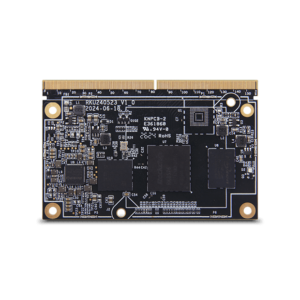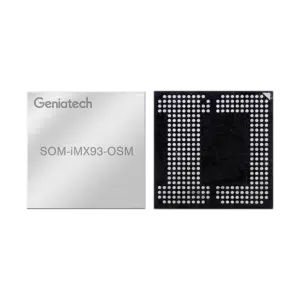Understanding System on Module (SoM) and Its Applications in Embedded Systems
Understanding System on Module (SoM) and Its Applications in Embedded Systems
Blog Article
The quick growth of technology has driven substantial innovations in stuck techniques, one of that is the imx8 system on module Acting as a bridge between custom technology and off-the-shelf adventures, the SoM is redefining how designers approach embedded system design. This website shows the fundamental knowledge of a Process on Component and its growing purposes in several industries.

What is a Process on Module (SoM)?
A Program on Element (SoM) is really a small, ready-to-use table that integrates most of the key components of a system on a single module. That usually involves the model, memory, power administration products, and sometimes extra peripherals like Wi-Fi or Ethernet. Unlike a normal single-board pc, an SoM doesn't have connections and software ports pre-installed, meaning it must certanly be along with a company board to make an entire system.
Designed to improve progress workflows, the modular nature of an SoM allows developers to skip the delicate process of planning and building each individual element from scratch. By adopting an SoM, organizations can focus more on the application-specific features of the products.
Benefits of Applying Process on Module
The integration of a whole program on a singular module gift suggestions several benefits. First, it drastically reduces enough time required for item development. Pre-tested segments ensure balance, preserving weeks of benefit executive teams.
Moreover, the scalability of an SoM allows corporations to adjust performance levels based on task requirements. As an example, a low-cost alternative can easily range into a high-end item by replacing the model in the module while keeping the copyright board design. This process reduces design risks while marketing long-term cost-efficiency.
Last but most certainly not least, the reliability of an off-the-shelf component ensures high compatibility with existing instruments and frameworks, rendering it perfect for equally small startups and big enterprises seeking to hit the market quickly.
Critical Applications of SoM in Stuck Methods
The usage of Process on Adventures spans several high-demand industries including however, not limited to medical units, automation, and consumer electronics.
Medical Products
Precision and reliability are paramount in healthcare. Process on Modules with protected running abilities are stuck in screens, imaging devices, and lightweight diagnostic tools.
Industrial Automation
Robust and energy-efficient, an SoM is vital for professional get a grip on techniques and autonomous robotics. Its scalable architecture supports high-speed data control and IoT connectivity.
IoT Units

Client products and services like intelligent thermostats, wearable units, and actually home assistants integrate an ultra-compact Process on Module for smooth performance.
The Process on Element continues to achieve footing due to its paid down difficulty and flexibility, cementing itself as a future-proof option in the stuck methods sphere. Market leaders already are leveraging these modules, and their range is anticipated to grow further as engineering evolves.
Report this page